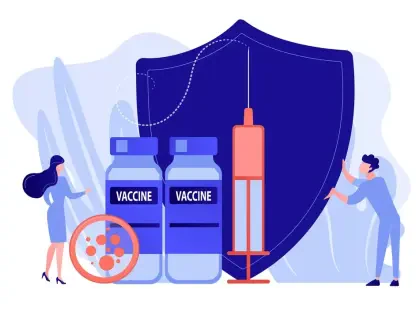In an era where digital transformation is redefining government services, Donald Gainsborough stands as a prominent leader, guiding policy and legislative advancements through his work with Government Curated. Today, we explore how state governments are innovating to tackle long-standing IT staffing challenges and harnessing cutting-edge technologies.
Can you elaborate on the recent recruiting campaigns by states like New York and Pennsylvania to fill government IT job vacancies?
These campaigns by New York, Pennsylvania, Maryland, Virginia, and Hawaii reflect a strategic push to draw experienced public-sector talent by offering streamlined hiring processes, flexible work conditions, and acknowledgment of prior federal experience. This approach targets laid-off federal employees, aiming to fill long-standing vacancies with personnel who can quickly adapt and contribute effectively.
What specific benefits are states offering to attract laid-off federal employees to their job vacancies?
To attract these seasoned professionals, states are providing benefits like reduced bureaucratic hurdles in the hiring process, flexible scheduling to accommodate personal needs, and credit for previous federal experience, which allows candidates to potentially enter at higher pay grades and with better retirement benefits.
Why is staffing alone insufficient to address the challenges faced by government IT teams?
While staffing is critical, it addresses only one layer of a multifaceted challenge. Government IT teams face hurdles such as legacy system maintenance, cybersecurity threats, and budget constraints. Without the right tools, even the most skilled staff cannot effectively meet the rising expectations for digital service delivery.
How do residents’ expectations for public sector digital services compare to private sector offerings?
Residents now expect government digital services to match the efficiency, speed, and security they experience in the private sector. This shift in expectation pushes government agencies to adopt more agile and robust IT solutions to deliver top-notch services.
What are some of the key challenges government IT teams face aside from staffing shortages?
Beyond staffing, IT teams grapple with outdated legacy systems, increasing cybersecurity challenges, and the pressure to innovate with limited financial resources. These issues are compounded by the need to ensure seamless integration and operability across various platforms and services.
How can automation and AI-powered platforms help government IT teams improve their services?
Automation and AI platforms offer powerful solutions by taking over repetitive, mundane tasks, allowing IT professionals to focus on higher-value activities. For example, automated testing can speed up software deployments and reduce the risk of errors, enhancing overall service delivery.
How is the use of automation tools not about replacing jobs but rather enhancing the roles of IT professionals?
These tools are designed to support, not supplant, human workers. Automation frees IT staff from time-consuming processes, enabling them to leverage their skills in areas like innovation, problem-solving, and strategic planning, ultimately enhancing their roles and work satisfaction.
What makes tech talent particularly hard to find and retain for state and local governments?
The high demand for tech roles, coupled with more attractive compensation and growth prospects in the private sector, poses challenges. Government roles often suffer from perceptions of limited advancement and higher workloads, which makes retention difficult.
Can you discuss the projected demand for roles like software developers and data scientists in the coming decade?
The demand for tech roles is set to increase significantly as digital transformation continues across all sectors. Positions like software developers and data scientists are expected to grow far above the national average, driven by advancing tech needs and innovations.
How does automation act as a “workforce multiplier” for government IT teams?
Automation multiplies workforce capacity by taking on repetitive tasks, allowing current staff to focus on more critical elements of their work. This extends team capabilities without the immediate need for additional recruits, optimizing efficiency and output.
In what ways can automated software testing benefit IT teams in local governments?
Automated software testing streamlines the verification process, ensuring systems operate correctly while reducing errors. It cuts down testing time and allows for more frequent and robust testing cycles, ensuring reliable software deployment.
What is the significance of rigorous testing throughout the software lifecycle?
Consistent testing throughout the lifecycle is essential to prevent small errors from escalating into major service disruptions. This approach ensures reliability and stability at every stage, from development to post-launch, maintaining service integrity and user trust.
Could you provide an example of how a state has successfully blended automation tools with their IT team to enhance capacity?
North Carolina’s Department of Health and Human Services is a notable example. By automating nearly 3,000 tests, they cut regression testing by 30% and regained over 40 hours per release cycle, allowing their team to achieve more extensive service improvements.
What challenges do state and local agencies face with end-to-end testing?
Traditional testing methods can be labor-intensive and brittle, struggling to adapt as software systems evolve, especially with diverse environments spanning mainframes and custom applications. Modern methodologies are needed to ensure robust and scalable testing.
How do modern, low-code, AI-powered platforms address these testing challenges?
These platforms provide a cost-effective solution for thorough, adaptable testing across complex systems. They enable rapid, reliable updates without sacrificing quality, essential for the dynamic nature of government tech environments.
What is the value of combining smart hires with smart tools in government IT?
The synergy of skilled professionals and advanced tools leads to a more efficient and effective IT environment. It empowers agencies to keep pace with evolving tech demands, delivering reliable services without overwhelming their workforce.
How do platforms that integrate into existing ecosystems benefit resource-constrained government agencies?
Such platforms can be implemented seamlessly, minimizing disruption and maximizing utility. They enable constrained agencies to advance their capabilities within existing resource limits, ensuring quality without the need for excessive investment.
What trends have been observed in industries regarding the use of AI and machine learning for test automation?
AI and machine learning are gaining traction, with around 75% of organizations utilizing these technologies for test automation. The trend underscores a commitment to improved efficiency, reliability, and adaptability in software testing processes.
Why is it important for public sector IT teams to blend staffing with tools for future resilience?
A combination of skilled personnel and sophisticated tools ensures that agencies can adapt to future demands. This blend provides flexibility and capacity to handle challenges, ensuring resilient, dependable services that meet public needs.
Do you have any advice for our readers?
Invest in learning and adopting new technologies while fostering a mindset of continuous improvement and collaboration. Embrace change and innovation to stay ahead in delivering services that truly meet and anticipate user demands.









